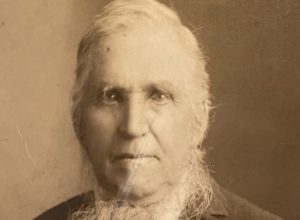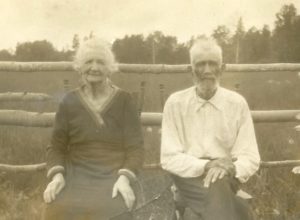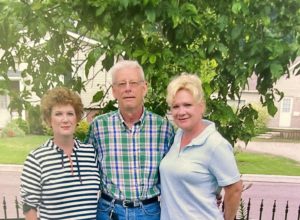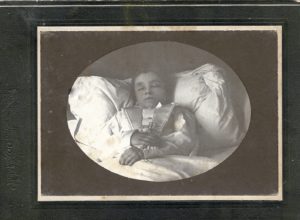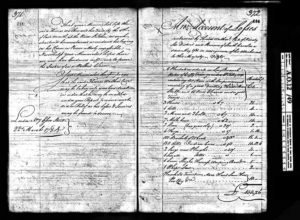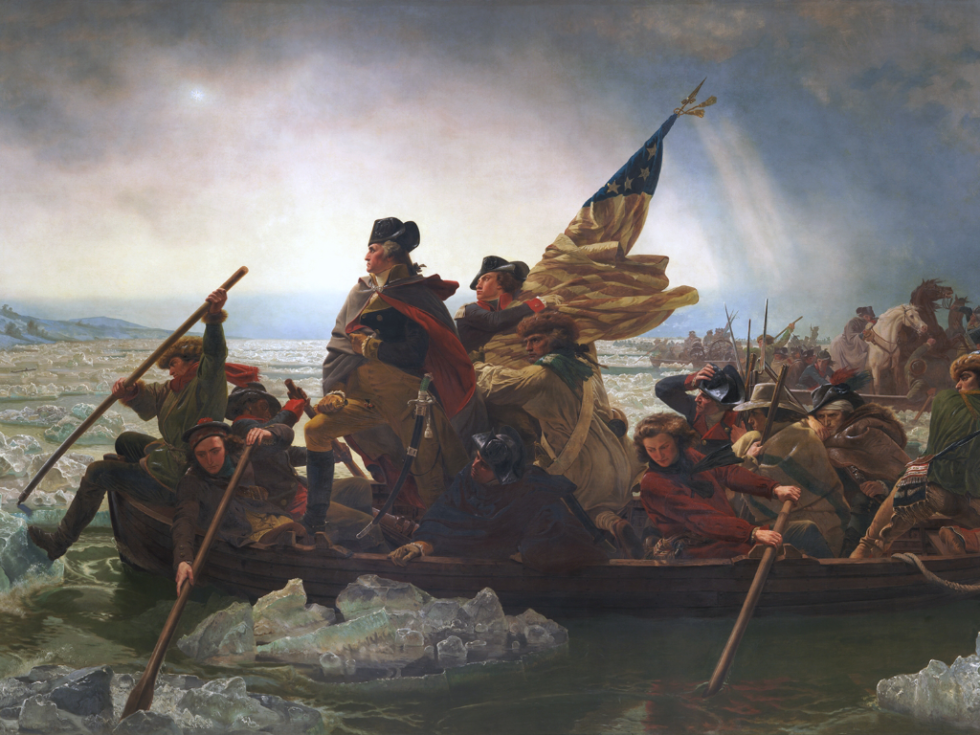
This is a true story about a Indian attack on a Revolutionary War Veteran and his family. Once in a while you come across someone in your genealogical research that literally blows your mind. While researching the Bradley family for a client of mine, I came across two individuals in her family tree that truly deserves appreciation and recognition.
Cornelius Bradley and Mary Hogan were born in Ireland in 1754 and 1755 respectively. Ireland in the 1700’s was not an easy place to be. In 1740, famine struck the country killing over 400,000 people. The Catholics lost all say in government issues and although the Protestants were they main say in politics, they also had to get their marching orders from England. Overall, there was little to be had for the Catholic population.
Table of Contents
Hope in the New Land
Young people especially saw hope in the new land of America. When young Cornelius left his homeland and set out for the New World he was aware that a political strife was brewing in America. He understood the atrocities that were beginning felt by the colonists as many from his own land experienced similar situations with the British.
He arrived in the colonies around 1774 and settled in Maryland. It is unclear whether or not he met Mary Hogan previously in Ireland or met her after arriving in the states; as they marry in 1775 in Maryland. You can surmise the young couple was full of hopes and dreams as they started their life together in a new land.
Mary soon found herself with child and between the years of 1775 and 1780, five sons were born to the couple. Unrest in the eastern colonies was apparent as talk of rebellion was on most minds. High taxation, British rule, and the presence of the ever mindful Redcoats stuck in the craw of many of the colonists.
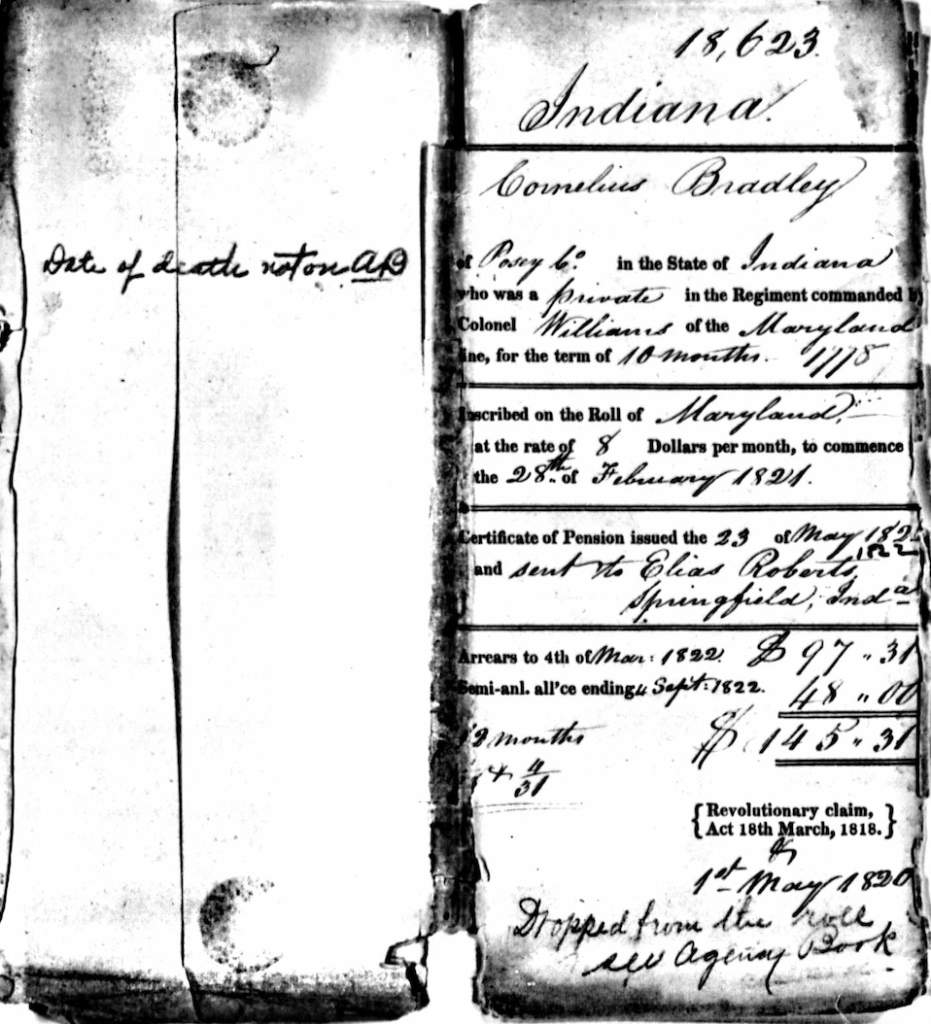
Revolutionary War
Cornelius had made up his mind that if war was inevitable he would join his fellow colonists to fight for his new country’s freedom. On June 10, 1778, he enlisted as a private in Captain Henry Dodson’s Company, the 6th Maryland Regiment, under Colonel Otho Williams. Little did he know that eighteen days later he would be fighting alongside General George Washington in the Battle of Monmouth in Freehold, New Jersey.
The Battle of Monmouth began as a disaster for the American troops; General Charles Lee instead of leading his men into battle lost confidence, confusing the men into thinking they should retreat. As Washington grasp what was happening he angrily took control using his own defensive tactics. By the end of the day both sides of the battle were exhausted and a temporary truce halted the battle until the next day. As evening approached the British quietly disappeared into the night. No fighting was resumed the next day. This was a victory for the Americans bringing a much needed moral boost to the weary troops.
Cornelius continued to serve in the corps until March 14, 1779 when he was honorably discharged in Middlebrook, New Jersey.
My Old Kentucky Home
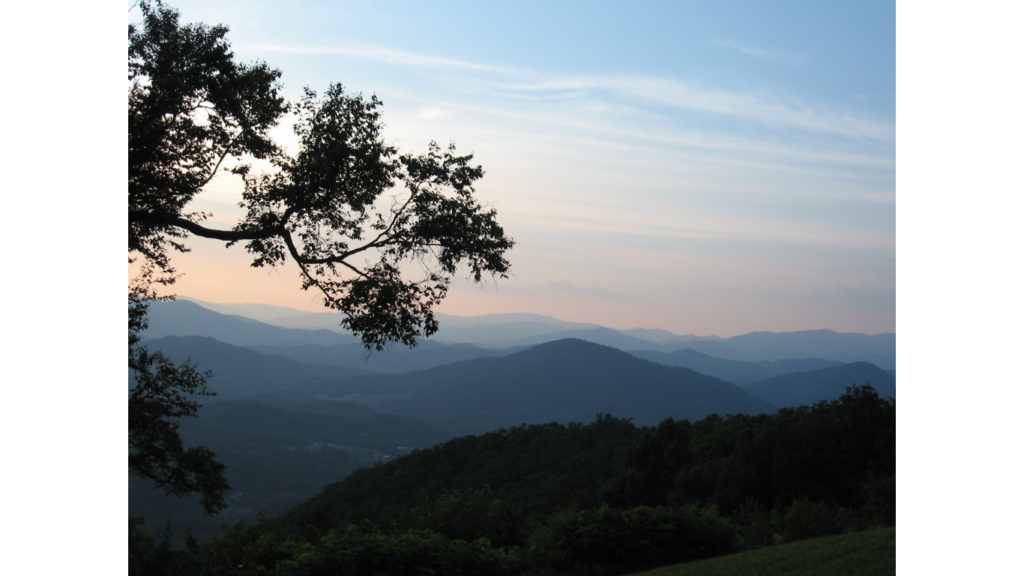
After receiving his discharge from the Army, the Bradley family migrated westward. Kentucky was their destination as it was a new territory and many families from the east were seeking inexpensive land and wide open spaces. Kentucky was a pioneer’s dream with its fertile land, numerous rivers and streams. Cornelius and his family settled in Indian Territory, a choice he would later regret.
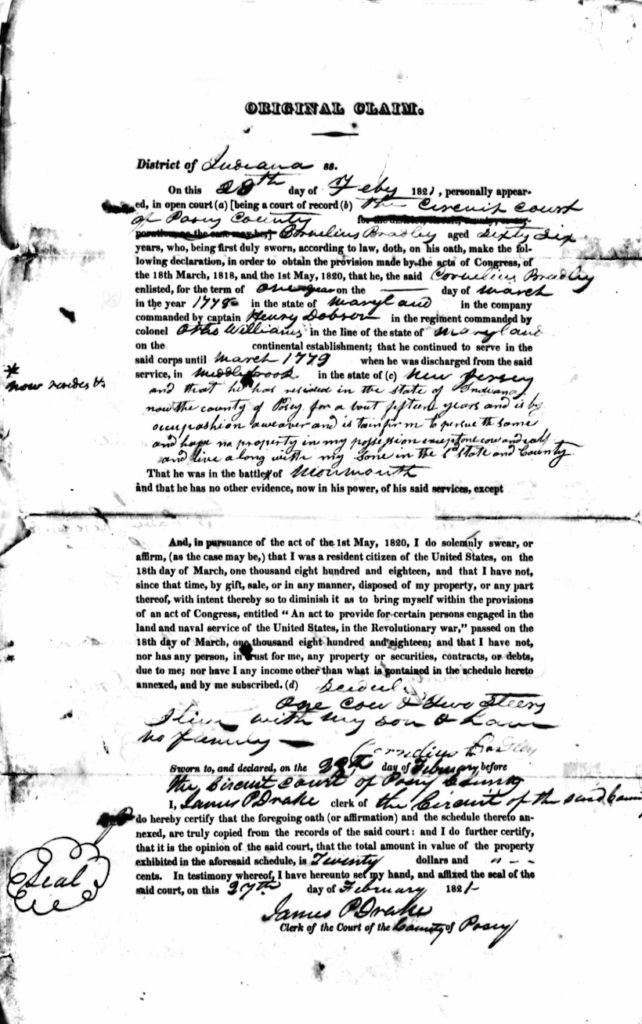
The letter below was written by a descendant of the family who explains the tragedy the Bradleys’ encountered as they were homesteading in the territory.
Fear Becomes a Reality
Upon receiving his discharge from the Army, Cornelius Bradley and family migrated westward into a then new territory known as Kentucky. There were many savage Indians in this new territory, and one day a band of those hostile Indians raided the cabin of the Bradley family. The settlers had been warned of the hostility of the Indians and Cornelius Bradley had started to make preparations to his family along with other families in the neighborhood to the Block House from the savages. Soon after Cornelius Bradley had left the cabin for the Block House, a band of Indians raided the Bradley cabin. Realizing that he could not reach his family in time to save the, Cornelius Bradley ran for help. Some distance from the cabin he sighted a neighbor, to whom he ran, and after mounting the horse behind him, the two raced with all speed possible to the Block House and soon a rescue party was on its way to the scene of the attack. The Indians had completed their dreadful attack upon the Bradley family and had made their way to other attacks. The rescue party made a hasty examination of the work of the Indians and leaving a few men to bury the dead again took up the chase of the departed savages. Cornelius Bradley was almost overcome with grief at the sight of his and five sons lying dead before him. When the men left by rescue party to bury the dead came to Mrs. Bradley, they noticed that she was still breathing faintly. They found that the Indians had scalped and stabbed her under the arms, and having thought that she was dead, left her and took up the chase of the four older boys, who had made a dash from the cabin The boys made a vain attempt to escape by diving into brush piles and thick underbrush, but the savages with blood-curdling yells took up the chase and soon completed the massacre. The infant son was snatched from the arms of Mrs. Bradley and dashed harshly to the ground and left for dead. While savages were chasing the older boys, the baby began to moan and cry. Mrs. Bradley, upon regaining consciousness heard the baby, and with great difficulty, dragged herself to the helpless child and let it nurse for a few minutes, before she noticed that the Indians were returning. She knew that they would kill her if they saw that she was still alive. So, she carefully laid the baby down and crawled to the place where she had been left for dead and lay very still. The Indians returned to the cabin after killing the boys and began to plunder the cabin. The baby began to faintly cry. The Indians, upon hearing the cry, ran out and picked the fellow up by the heels and dashed its brains out against the logs of the cabin. Cornelius Bradley and the rescue part took Mrs. Bradley to the Block House where she was tenderly nursed back to a complete recovery. A silver plate was placed in her head to protect the scalp would and throughout the remainder of her life, she was compelled to wear a scarf to hide the wound the Indians had scalped her. Mrs. Bradley and her husband again took up life on their farm and three other children were born to them. The first of these three later sons was named after the five who had been massacred by the Indians. His name was David Robert Ewan Alexandre Dunn Bradley. It is significant that the initials of this son’s name spell “DREAD”, as a word which seemed to describe the tale of horror that had befallen the family. The other two sons were called John and Hiram. Little is actually know of the lives of John and Hiram Bradley, but in the Directory and History of Posey County (Indiana), published in 1882, the following notation is found, “John Bradley was a security bondsman for George Gibbons, who had killed a young physician named Thomas Moore Parks.” John Bradley was killed when he fell from a wagon and broke his neck. D.R.E.A.D (David Bradley) grew into manhood and eventually married Betty Kirby of Bowling Green, Kentucky. They were the parents of eight children: Hannah, Lucretia, Melenda, Sarah Ann, Harriet, William Penn, Thomas Jefferson and Dunn.
After the death of his beloved wife, Mary in 1790 he left Kentucky with his family and settled in Posey County, Indiana where he lived until his death on August 26, 1840.
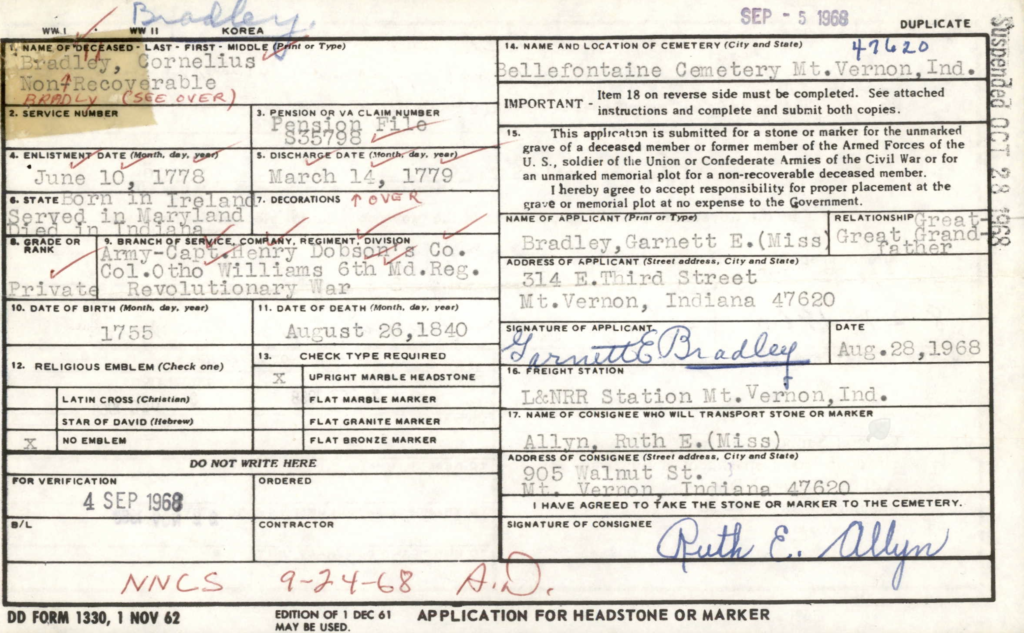
Cornelius and Mary were two unforgettable individuals who persevered and survived such horrific tragedies through love and strength of character.
Revolutionary War Veteran – Related Articles
This Revolutionary War Veteran story and others can be found below. The Quiet Hero is one you definitely should read if you haven’t yet.
